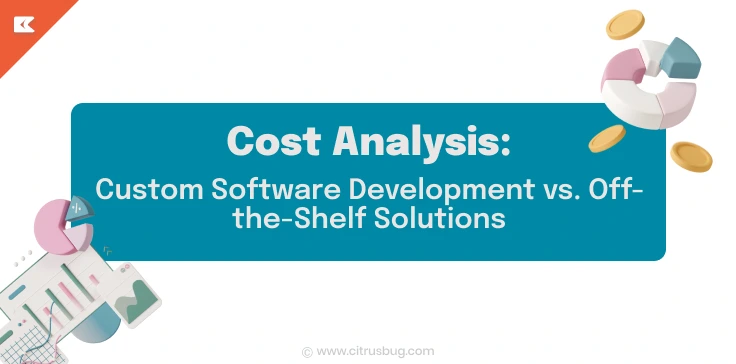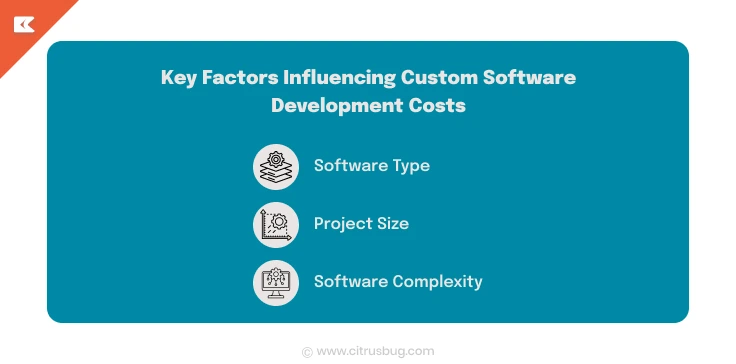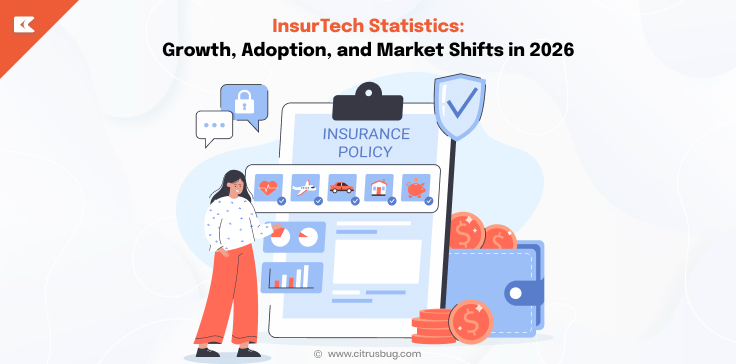Cost Analysis: Custom Software Development vs. Off-the-Shelf Solutions
- December 20, 2024
-
3152 Views
- by Ishan Vyas
Table of Contents
In today’s rapidly evolving business landscape, selecting the right software solution is critical for operational efficiency and scalability. Businesses often face a dilemma when choosing between custom software development and off-the-shelf solutions. Custom software is specifically designed to meet unique business needs, providing tailored features and seamless integration. On the other hand, off-the-shelf solutions offer pre-built functionalities that can be quickly implemented but may not fully align with specific workflows.
Most often, the decision between the two options depends on factors like cost, flexibility, and long-term business objectives. Custom software will be the winner in terms of specialized requirements, but off-the-shelf solutions are generally less expensive upfront and deploy much more easily. This allows businesses to choose the right solution for them and ensures they enhance productivity, grow their business, and gain value over time.
What is Custom Software Development?
This custom software development basically creates designs and developments and rolls out unique, specifically suited business requirements software. Generally, unlike typical, pre-developed and commercially off-the-shelf products, a customized solution would relate to particular workflow or needs or features not available or addressable through current software applications. This, therefore goes on to detail all those initial steps such as conception, designing, coding, testing, and finally launching it as the implementation into production.
Custom software development is often a collaborative process between a development team and business stakeholders to ensure that the final product delivers the desired functionality and performance. This is a time-consuming and resource-intensive approach, but it offers unmatched flexibility and personalization.
Key Factors Influencing Custom Software Development Costs
Understanding the cost of custom software development involves breaking down several key elements that lead to the final investment. Knowing these factors will help organizations make better decisions and ultimately choose solutions that fit well with their objectives and budgets. Here are the major determinants of custom software development costs:
Software Type
The type of software being developed significantly affects the overall costs. Custom application software development is a process that usually involves substantial investments because of the detailed planning, design, and coding involved in tailoring solutions. In contrast, modernization or modifications to existing software are generally cheaper but still involve significant expenses in updates, new features, and ensuring system compatibility.
Custom development would also extend to enterprise-grade solutions, which tend to be high-priced because of their features, functions, and performance. To add to that, the software would have to be integrated, especially with separate systems, which becomes very costly and complex because of seamless connectivity that usually results from custom solutions. Moreover, web development costs could greatly vary, depending on project complexity, user experience requirements, and security expenditure, with long-term maintenance further adding to these costs.
Project Size
The size and scope of a custom software development project have a direct impact on costs. Projects are often categorized into three main sizes:
- Small projects: these include solutions with limited features and simple workflows. Small projects are more economical, but the project requires adequate planning and execution toward the desired result.
- Medium projects: it involves more extensive feature integration and more system requests. More work is required when developing this, and additional testing and quality assurance are always needed, which results in increased cost.
- Large projects: The large projects include extensive features, complex integrations, scalability considerations, and advanced functionalities. These projects usually require larger development teams, longer timelines, and significant resources, making them the most expensive.
Software Complexity
The complexity of the features and functionality of the software is another major cost driver. Basic software solutions with minimal features, such as simple data entry forms or basic reporting capabilities, are relatively inexpensive to develop. However, costs increase significantly for complex software that includes advanced features such as machine learning, artificial intelligence, sophisticated analytics, or extensive user interactions.
As the complexity of software increases, so does the time and effort in design, development, testing, and quality assurance. Custom software development services require more resources to ensure functionality, performance, and reliability, which increase the overall cost.
In summary, project type, complexity, and size are the most significant aspects in determining the cost involved in custom software development projects. If these factors are carefully analyzed, businesses can manage to prioritize features, optimize the budget, and ensure a cost-efficient approach to software development.
Average Custom Software Development Costs
The cost of bespoke custom software solutions varies significantly depending on the industry and the complexity of the application. Understanding average industry-specific costs can help businesses better anticipate their investment.
- Healthcare: Healthcare software development has very strict regulatory requirements, advanced data security protocols, and essential system integrations. These contribute to the cost, often in the range of $100,000 to $500,000+.
- Logistics: In the logistics field, complexity in features such as real-time tracking, route optimization, and supply chain management raises the costs. In custom software development for logistics requirements, costs can vary anywhere from $50,000 to $250,000 or more depending on the specific needs of the client.
- FinTech: FinTech applications are usually the most expensive to develop, in the range of $50,000 to $500,000+. The major reason for this is advanced security measures, strict regulatory compliance, and the need for easy integration with complex financial systems.
Understanding Off-the-Shelf Software Solutions
Off-the-shelf software refers to pre-packaged solutions designed to meet usual needs of businesses. Generally ready for use, off-the-shelf software is affordable on an upfront basis because deploying is quickly feasible, and they are extensively deployed throughout the market. Given the large user base whose cost it spreads, off-the-shelf software is significantly more affordable than custom packages.
However, such software may not align perfectly with a company’s specific processes. It can perform all the routine work but it comes with a certain number of hidden costs: licensing fees, updates, and inability to be custom-made at all. Businesses also waste money in order to adjust their current systems or even adapt the workflows according to its functionality.
Off-the-shelf software is cheap and instant but may not be flexible enough to meet the needs of a business. Organizations should, therefore, weigh its drawbacks and long-term costs in making a decision.
Factors Influencing Off-the-Shelf Software Costs
Understanding the real cost of off-the-shelf software requires an assessment of the key factors that influence its pricing and long-term expenses. Although off-the-shelf solutions seem cheap initially, the following elements can significantly impact overall costs:
1. Licensing Fees
Most off-the-shelf software solutions operate on a subscription-based pricing model. Here, businesses pay for monthly or annual licensing fees. Low initial costs do not, however, preclude recurring payments that might build up over time considerably as businesses scale or require premium versions of the software.
2. User Count
Many off-the-shelf software providers price according to the number of users. As organizations expand and add more employees, the costs increase proportionally. For larger businesses, this cost of paying per user can become significant and may exceed initial expectations.
3. Limitations of Customization
While some level of personalization is possible in off-the-shelf solutions, it is sometimes limited. Extra personalization with respect to adding specific features or tuning functionalities, usually incurs some additional costs. These expenses pile up when trying to adapt the software to meet unique business processes.
4. Integration Costs
Although off-the-shelf software is marketed as ready to use, the integration process can be tricky and costly. Businesses often need to spend money on expert IT support or third-party tools for smooth integration.
5. Training Costs
New off-the-shelf software usually requires the retraining of employees on using it. Training programs or workshops may incur costs for hiring trainers, depending upon the complexity of the software, which may require specific skills.
6. Scalability Requirements
Off-the-shelf software can have upgraded or higher-tier plans needed as businesses grow. Usually, features like more storage, advanced reporting, or extended user limits are available with premium plans or add-ons. These scalability needs end up costing more in the long run.
Hidden Costs of Off-the-Shelf Software Solutions
While off-the-shelf software may seem cost-effective initially, businesses often overlook hidden expenses, including:
- Overpaying for Unused Features: Generic solutions often come with features that remain unused but are included in the pricing.
- Customization Costs: Tailoring an off-the-shelf solution can be costly and limited in scope.
- Integration Challenges: Aligning pre-built software with existing workflows or systems can require significant investments.
- Downtime or Performance Issues: Off-the-shelf software may lack optimization for specific business operations, leading to productivity losses.
- Vendor Lock-In: Businesses may become dependent on a single vendor for updates, support, and future enhancements, increasing long-term costs.
Conclusion
The choice between custom software development and off-the-shelf solutions depends on your requirements, budget, and future goals. Custom software includes tailored features, scalability, and integration, but the upfront cost is high. Compared to that, off-the-shelf solutions are highly budget-friendly and easy to deploy but might incur various hidden expenses and have rigidness.
By analyzing the cost breakdown, influencing factors, and hidden expenses of both options, businesses can make an informed decision that maximizes ROI and ensures long-term success.





 SaaS Development
SaaS Development Web Application Development
Web Application Development Mobile Application Development
Mobile Application Development Custom Software Development
Custom Software Development Cloud Development
Cloud Development DevOps Development
DevOps Development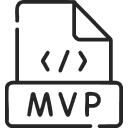 MVP Development
MVP Development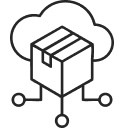 Digital Product Development
Digital Product Development Hire Chatbot Developers
Hire Chatbot Developers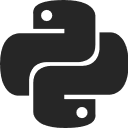 Hire Python Developers
Hire Python Developers Hire Django Developers
Hire Django Developers Hire ReactJS Developers
Hire ReactJS Developers Hire AngularJS Developers
Hire AngularJS Developers Hire VueJS Developers
Hire VueJS Developers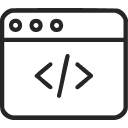 Hire Full Stack Developers
Hire Full Stack Developers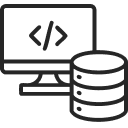 Hire Back End Developers
Hire Back End Developers Hire Front End Developers
Hire Front End Developers AI Healthcare Software Development & Consulting
AI Healthcare Software Development & Consulting Healthcare App Development
Healthcare App Development EHR Software Development
EHR Software Development Healthcare AI Chatbot Development
Healthcare AI Chatbot Development Telemedicine App Development Company
Telemedicine App Development Company Medical Billing Software Development
Medical Billing Software Development Fitness App Development
Fitness App Development RPM Software Development
RPM Software Development Medicine Delivery App Development
Medicine Delivery App Development Medical Device Software Development
Medical Device Software Development Patient Engagement Software Solutions
Patient Engagement Software Solutions Mental Health App Development
Mental Health App Development Healthcare IT Consulting
Healthcare IT Consulting Healthcare CRM Software Development
Healthcare CRM Software Development Healthcare IT Managed Services
Healthcare IT Managed Services Healthcare Software Testing services
Healthcare Software Testing services Medical Practice Management Software
Medical Practice Management Software Outsourcing Healthcare IT Services
Outsourcing Healthcare IT Services IoT Solutions for Healthcare
IoT Solutions for Healthcare Medical Image Analysis Software Development Services
Medical Image Analysis Software Development Services Lending Software Development Services
Lending Software Development Services Payment Gateway Software Development
Payment Gateway Software Development Accounting Software Development
Accounting Software Development AI-Driven Banking App Development
AI-Driven Banking App Development Insurance Software Development
Insurance Software Development Finance Software Development
Finance Software Development Loan Management Software Development
Loan Management Software Development Decentralized Finance Development Services
Decentralized Finance Development Services eWallet App Development
eWallet App Development Payment App Development
Payment App Development Money Transfer App Development
Money Transfer App Development Mortgage Software Development
Mortgage Software Development Insurance Fraud Detection Software Development
Insurance Fraud Detection Software Development Wealth Management Software Development
Wealth Management Software Development Cryptocurrency Exchange Platform Development
Cryptocurrency Exchange Platform Development Neobank App Development
Neobank App Development Stock Trading App Development
Stock Trading App Development AML software Development
AML software Development Web3 Wallet Development
Web3 Wallet Development Robo-Advisor App Development
Robo-Advisor App Development Supply Chain Management Software Development
Supply Chain Management Software Development Fleet Management Software Development
Fleet Management Software Development Warehouse Management Software Development
Warehouse Management Software Development LMS Development
LMS Development Education App Development
Education App Development Inventory Management Software Development
Inventory Management Software Development Property Management Software Development
Property Management Software Development Real Estate CRM Software Development
Real Estate CRM Software Development Real Estate Document Management Software
Real Estate Document Management Software Construction App Development
Construction App Development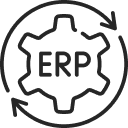 Construction ERP Software Development
Construction ERP Software Development





